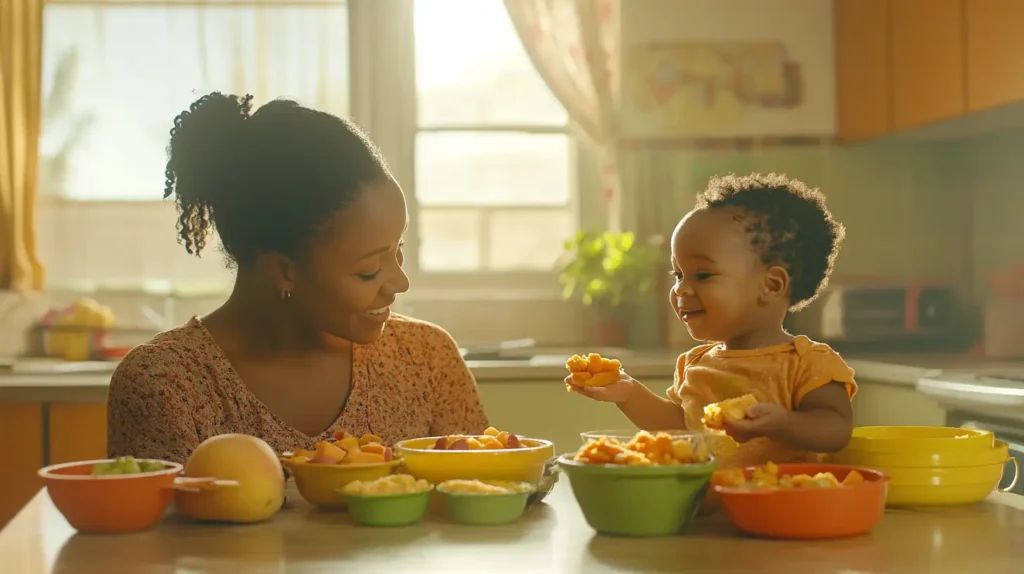Table of Contents
ToggleFrom Smooth to Chunky: The Life-Changing Journey of Baby Food Textures
Have you ever found yourself staring at that little spoon, wondering if your baby is really ready for something beyond that smooth purée? Maybe you’ve hesitated when considering those tiny chunks, worried about choking, or perhaps you’re just not sure when to make that next step in your baby’s feeding journey. This used to be me every single mealtime, analyzing every bite as if it would determine my child’s entire future.
In this article, I’m going to share with you something I really wish I learned sooner about baby food textures – something that completely transformed how I approach feeding my little one.
I remember sitting at dinner with my sister-in-law who was asking me for advice. Her baby was stuck on purées and refusing anything with the slightest texture. She was frustrated, worried, and honestly just exhausted by the constant food battles. Sound familiar?
Let me explain how texture progression actually works. I used to overthink every meal. Every texture. Every new food introduction. I thought if I just researched more about getting it perfect, avoided any potential choking hazards, and followed every expert recommendation to the letter, my baby would be the perfect eater.
But in reality, caring too much was just creating anxiety for both of us at mealtimes. So I made a change that transformed our feeding journey and closed the gap between knowing what my baby needed and actually providing those experiences confidently. And it can do the same for you.
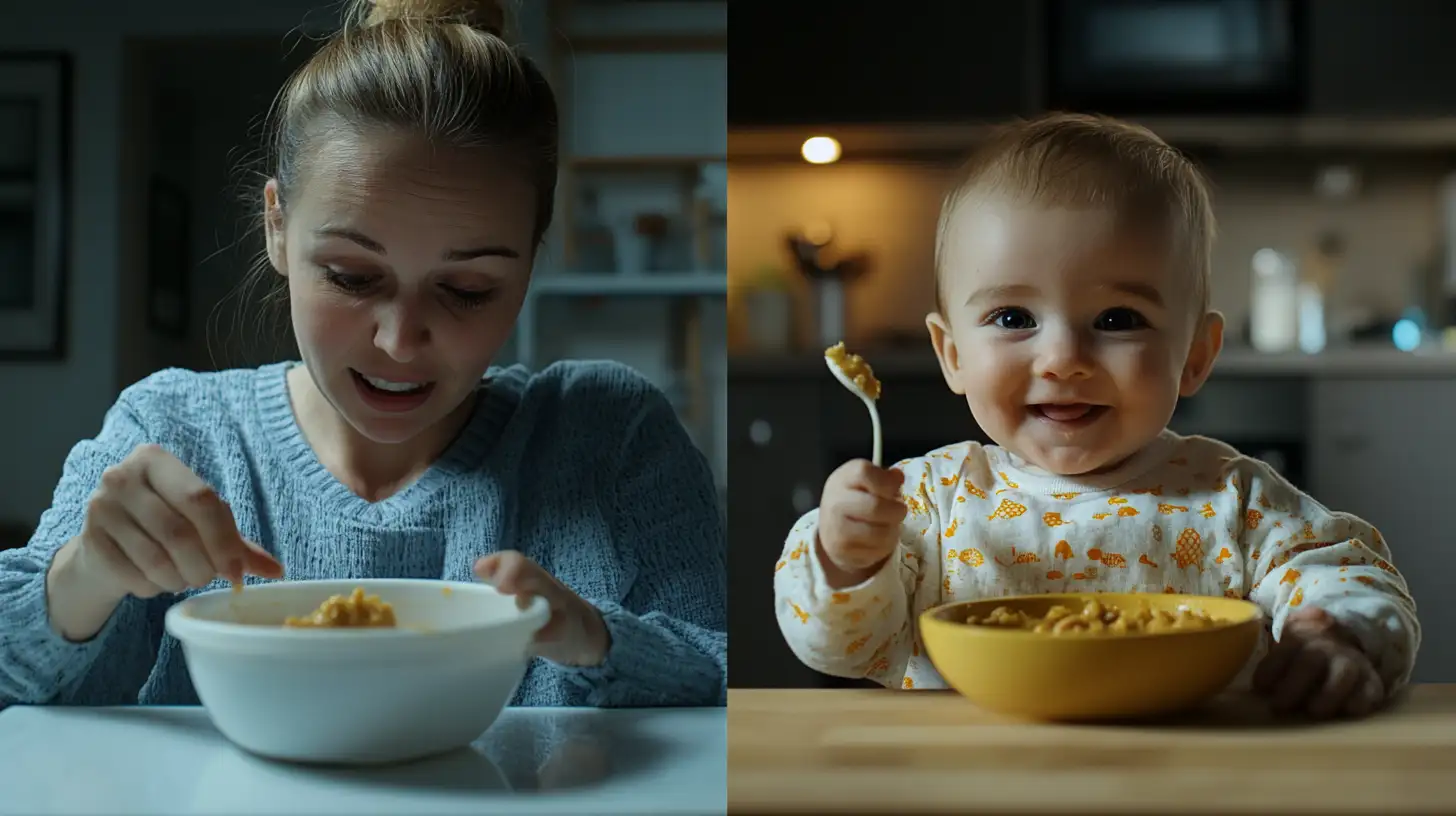
Why Texture Matters More Than You Think
This may sound crazy, but the way to develop a good eater isn’t what you think. Most parents believe that nutrition is the most important aspect of feeding babies. And yes, nutrition matters! But what research has consistently shown is that texture experiences in the first year of life are actually more predictive of healthy eating patterns later.
Here’s the biggest mistake most parents make: we think by limiting textures and keeping foods safe (meaning soft and smooth), we’re protecting our babies. We believe that if we just care deeply enough about preventing any gagging or coughing, we’ll raise a good eater.
But the opposite is often true in your baby’s development. The more you restrict texture experiences during that critical window between 6-12 months, the more likely your child might develop sensory sensitivities or become a picky eater later.
When I was growing up in my grandmother’s kitchen in Trinidad, babies weren’t fed from special jars or pouches. They ate what the family ate, just mashed or cut differently. My grandmother would say, A baby who only knows smooth will only want smooth. The wisdom in those words reflects exactly what developmental feeding research now confirms.
I remember watching my son’s face the first time he experienced the slight resistance of mashed banana with tiny lumps. His eyes widened, his tongue worked differently, and yes – he gagged a little. My heart jumped to my throat! But then he figured it out. Because that’s what babies do when we give them safe opportunities to learn.
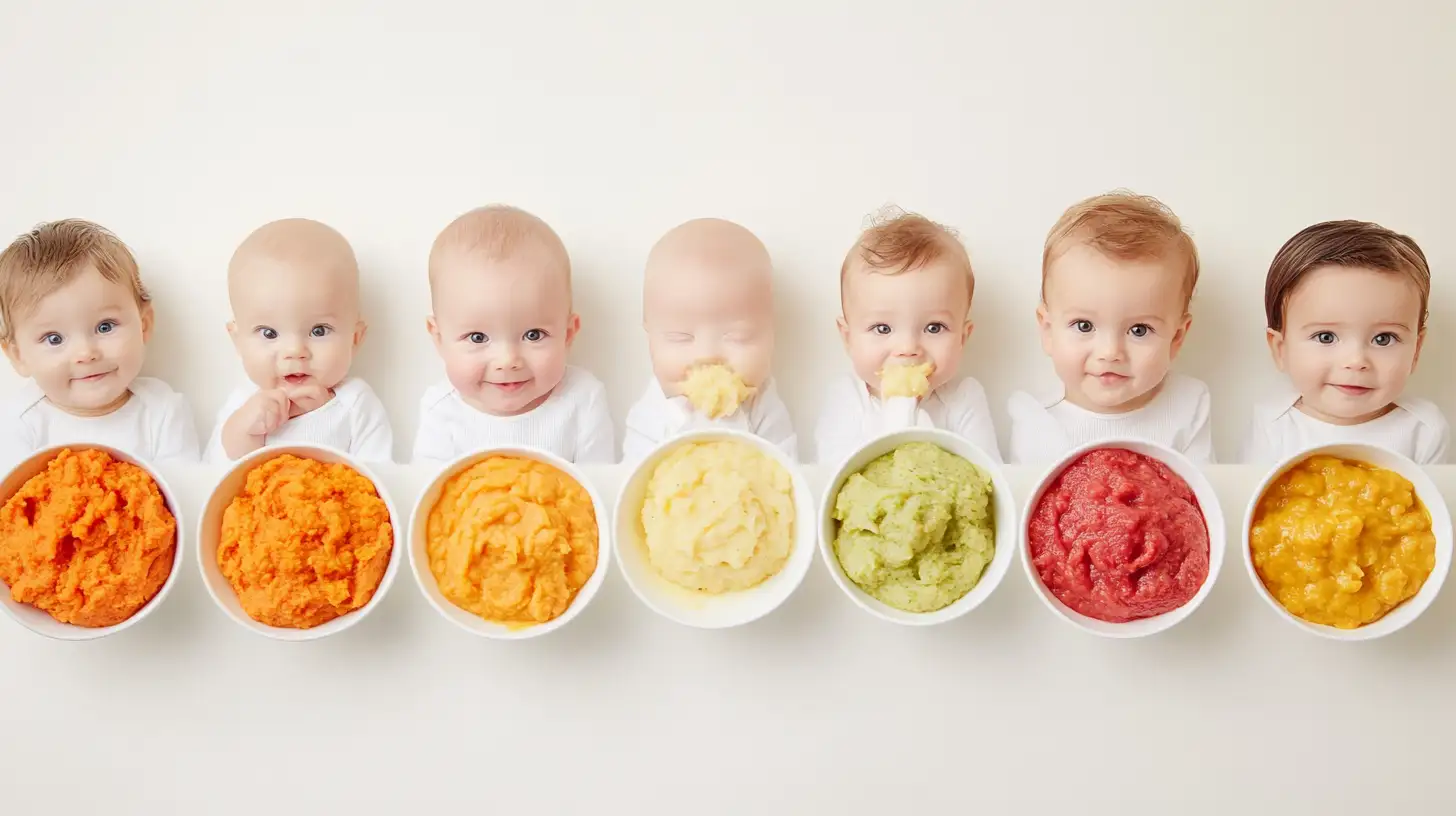
The Perfect Texture Timeline: When to Introduce What
If you’re satisfied with knowing that texture progression matters, but you’re still wondering about the practical when, I’ve got you covered. And if you’re doing your best and happy with your approach, the exact timing is somewhat irrelevant because you’ve already shown up and you’re doing your part as best as you can.
But sometimes, don’t you feel that having a clear roadmap would make this journey easier? I sure did! So here’s a research-based timeline that I wish someone had given me:
6 months (Beginning Solids): Start with smooth, thin purées that pour easily off a spoon. Think first foods like single-grain cereals mixed with breastmilk or formula, or simple vegetable purées like sweet potato or carrot blended with enough liquid to create a soup-like consistency.
6-7 months: Move to thicker, smooth purées that hold their shape on a spoon. This includes mashed banana, avocado, or cooked and blended fruits and vegetables without added liquid.
7-8 months: Introduce soft lumps and small, soft pieces mixed into purées. Try fork-mashed foods rather than completely blended ones, allowing small, soft lumps to remain. My son’s first experience with this was my grandmother’s recipe – tender cooked plantain, lightly mashed with a fork and mixed with a little coconut milk.
8-9 months: Offer soft, mashed foods with noticeable lumps and soft finger foods that dissolve easily. This includes soft fruits like ripe mango or papaya cut into strips, well-cooked pasta, or soft bread crusts.
9-11 months: Progress to chopped, tender foods and more variety of finger foods. Think small bits of soft-cooked vegetables, tender shredded meats, and soft fruits cut into small pieces.
12+ months: Move toward table foods and family meals with appropriate modifications. Most foods can be introduced in soft, bite-sized pieces, allowing your baby to experience the full range of textures in your family’s diet.
Now let me be clear – this isn’t about being rigid with timing. It’s about following your baby’s developmental cues. If your baby has good head and trunk control, can sit with support, shows interest in food, and has lost the tongue-thrust reflex (no longer automatically pushing food out), they’re showing readiness for starting solids and beginning this texture journey.
The irony here is that when you’re no longer holding on to a strict timeline but instead watching your baby’s cues, things start to fall into place naturally. And this brings me to the next point.
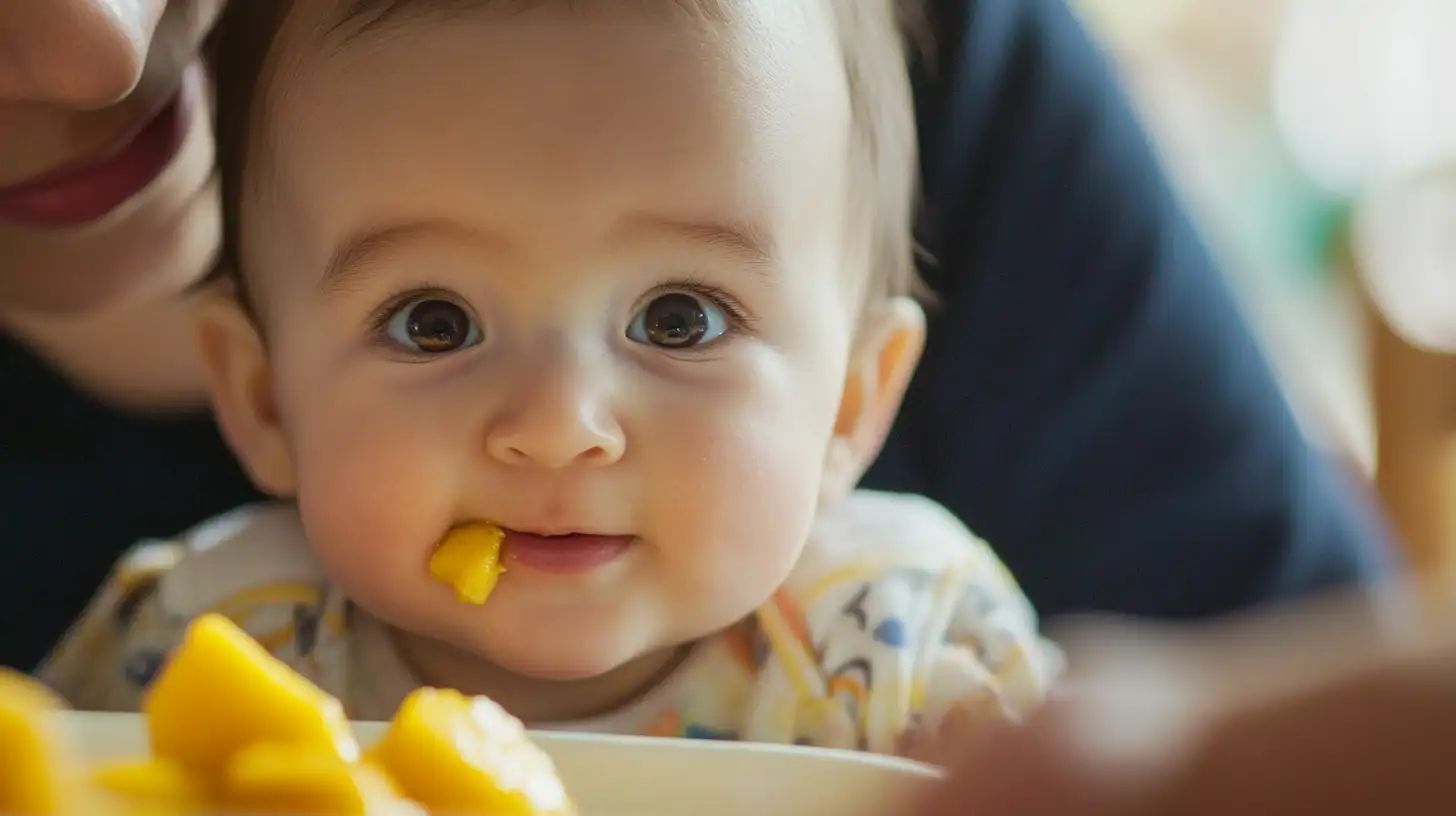
Reading Your Baby’s Signals: Gagging versus Choking
Let’s talk about the number one fear that keeps parents stuck in purée-land longer than necessary: the fear of choking.
Imagine how you’d feel to be free from this anxiety, free from overthinking every bite, free from the fear of your baby struggling with food. Because here’s the thing: understanding the difference between gagging and choking will transform your confidence at mealtimes.
Gagging is a normal, protective reflex that helps babies learn to manage food safely. When a baby gags:
- They make noise (coughing, sputtering sounds)
- Their face may turn red
- They might push food forward with their tongue
- They’re actively working to clear the food themselves
Choking, on the other hand, is an emergency situation where food blocks the airway. When a baby is choking:
- They’re silent or making very minimal sounds
- They may turn blue around the lips
- They look panicked and cannot cough effectively
- They need immediate assistance
I’ll never forget sitting across from my son as he encountered a piece of soft mango that was slightly larger than what he was used to. He gagged dramatically – tongue out, eyes wide, making exaggerated motions with his mouth. My instinct was to leap across the table and perform the baby Heimlich! But I took a deep breath, remembered my training, and watched as he worked through it himself, eventually swallowing successfully.
That moment of restraint was transformative. I realized he was learning a critical skill – how to manage food in his mouth – and my panic would only disrupt that process.
The best parents and caregivers that I know care deeply about safety, but they’re not paralyzed by fear. They show up, create safe eating environments (proper seating, appropriate food sizes, constant supervision), and then trust in their baby’s innate reflexes while remaining vigilant.
Because they know if they’ve done everything they can to create a safe environment, they’ve already won. And so have you.
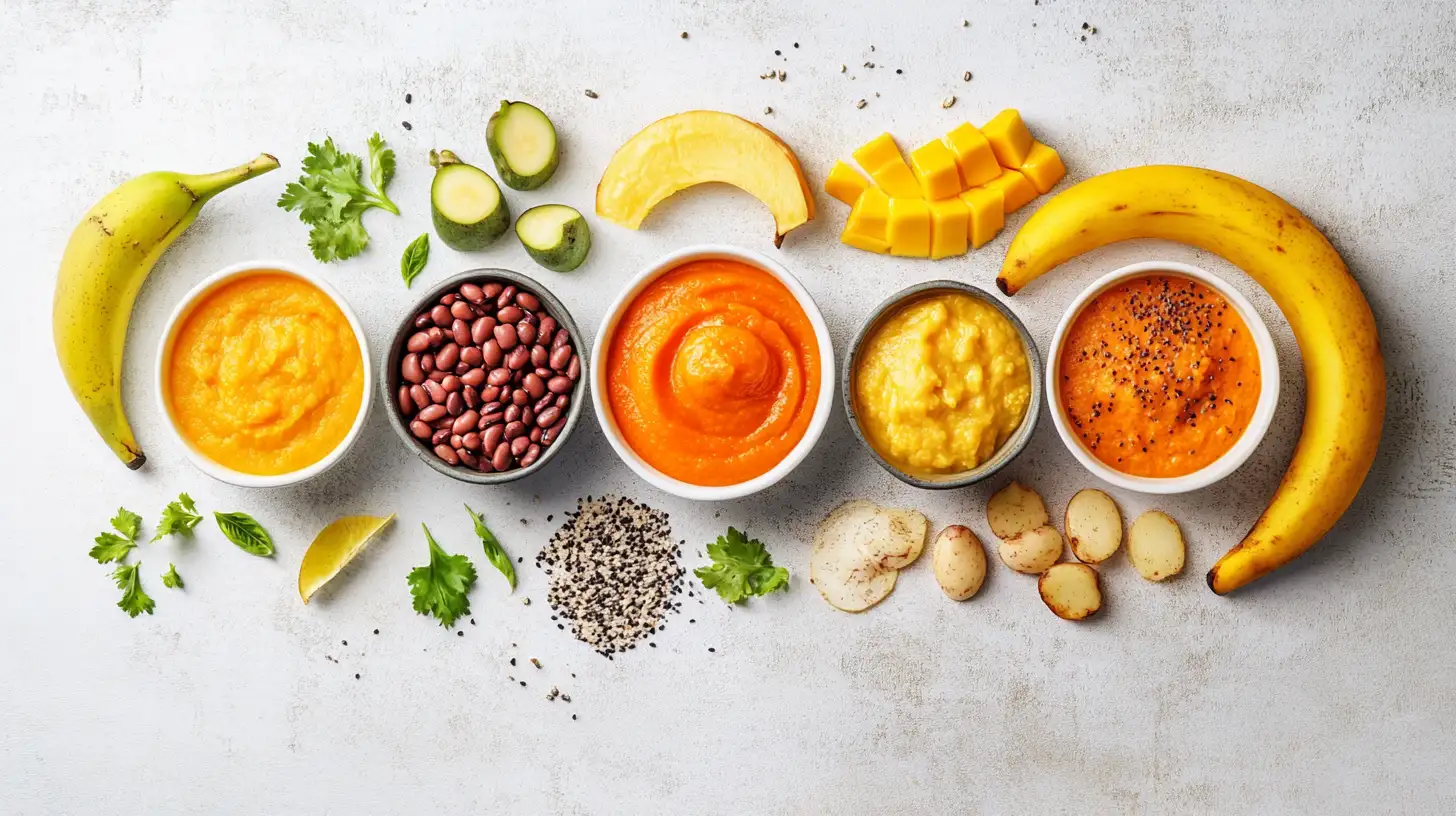
The Magic Food List: Texture-Perfect Foods for Every Stage
It’s time that we all embrace this with-or-without-me energy when it comes to introducing textures. The feeling that your baby is going to develop and grow regardless – your job is to provide opportunities rather than perfect experiences.
This brings me to a practical tool: foods that naturally support texture progression. I’m a perfectionist by nature (if you are too, shout out to all the label-reading, food-cutting, measuring parents out there!), and what I learned about overcoming my food anxiety was that it isn’t about feeding perfectly – it’s about never feeling like you’re providing enough variety.
So here’s my magic list of Caribbean-inspired and everyday foods that naturally support texture development at each stage:
First Textures (Smooth Purées):
- Sweet potato puréed with breastmilk or formula
- Smooth mango purée (my Caribbean favorite!)
- Simple avocado mash
- Single-grain infant cereals
- Puréed pumpkin or calabaza squash
Early Texture Development (Thicker Purées):
- Mashed ripe banana
- Thick guava purée
- Lentils cooked until very soft and mashed
- Plain yogurt mixed with smooth fruit purées
- Soft-cooked and mashed green plantain
Intermediate Textures (Soft Lumps):
- Fork-mashed beans with a little broth
- Overnight oats softened in milk
- Soft-cooked root vegetables like yuca or dasheen, mashed with small lumps
- Cottage cheese mixed with finely mashed fruit
- Soft bread soaked in breastmilk or formula
Advanced Textures (Soft Pieces):
- Tender shredded chicken in small amounts
- Well-cooked pasta cut into small pieces
- Ripe papaya pieces
- Soft-cooked callaloo or spinach, finely chopped
- Small pieces of mild white fish, carefully checked for bones
Pre-Toddler Textures (Mixed Table Foods):
- Soft rice and bean dishes with small, soft pieces
- Tender ground meat with soft vegetables
- Small pieces of soft tropical fruits
- Well-cooked vegetable pieces in soup
- Soft versions of family meals, cut appropriately
When I stop worrying about having every food perfectly prepared and instead focus on providing a general progression of experiences, mealtimes became joyful again. I launched our solid food journey with just basic tools in my kitchen – no fancy baby food maker needed. I stood up to well-meaning but outdated advice from relatives who thought babies needed only smooth foods for much longer.
Because here is the most powerful thing in life and in feeding babies: when you embrace the process of development versus trying to achieve a specific result, you will achieve more than you ever thought possible.
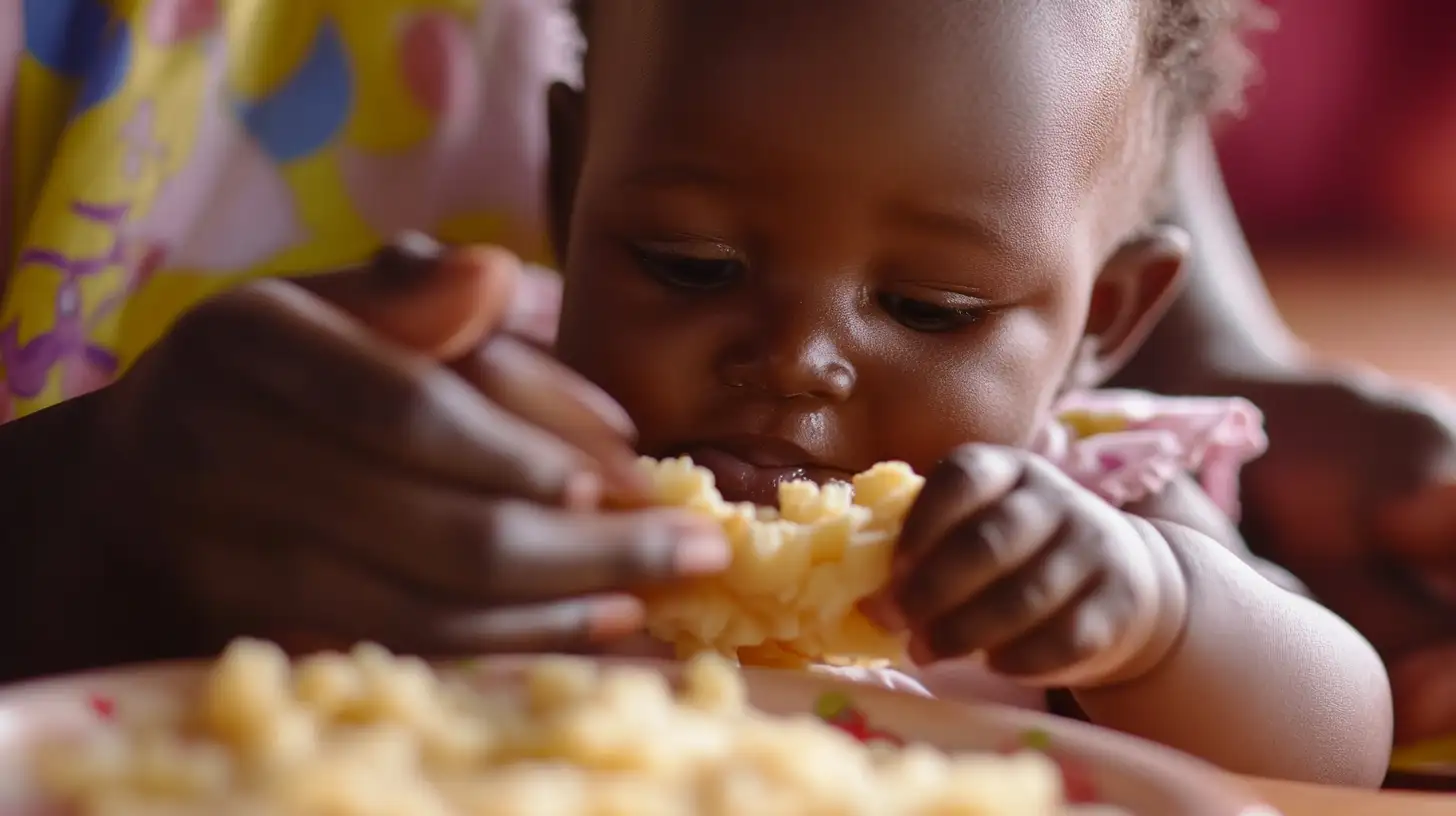
Nurturing Independence: Beyond Just Eating
Knowing that food texture progression is about more than just nutrition – it’s about developing oral motor skills, sensory processing, and even cognitive development – is enough. And you are enough for your baby on this journey.
By taking each step forward without knowing exactly how it will end, but trusting in the process, you’re giving your child much more than just food. You’re supporting their:
Oral Motor Development: Moving from smooth to lumpy to chopped foods helps strengthen jaw muscles, develops tongue mobility, and supports future speech development. Did you know that the same muscles used for chewing develop skills needed for speaking clearly?
Sensory Processing: Experiencing different textures in the mouth helps babies learn to process and accept sensory input, potentially reducing sensory sensitivities later in life.
Independence and Self-Regulation: As textures become more complex, babies naturally move toward self-feeding. This supports their growing desire for independence and helps them learn to regulate their own intake based on hunger and fullness.
I remember watching my son struggle to pick up a small piece of soft mango. He tried repeatedly, growing slightly frustrated but determined. My mother-in-law reached to help him, but I gently stopped her. He needs to learn this himself, I whispered. Three attempts later, he succeeded, his face lighting up with pride as the fruit reached his mouth.
This brings me to the point that fears of judgment from others – whether it’s the grandparent who thinks you’re moving too fast with textures or the friend whose baby seems to be progressing differently – are really just stories we tell ourselves that limit our confidence.
At the end of the day, the people who truly matter in your life won’t mind your approach to feeding. And for the people who mind? They don’t matter in your feeding journey. This is between you and your baby.
So why waste another moment worrying about someone else’s timeline or expectations? Why not build a feeding relationship that aligns with your values, your baby’s development, and your family’s mealtime culture?
Your Baby’s Food Journey Starts Now
Wherever you’re reading this article, I want you to have the courage, clarity, and power to guide your baby’s texture journey with confidence.
Because you become a powerful parent when you stop caring about the perfect feeding schedule and start tuning into your baby’s development and needs. You become unstoppable in nurturing a healthy relationship with food when you trust the process.
If you’ve given your baby opportunities to experience new textures in a safe, supported way, you’ve already succeeded – regardless of whether they accepted that food today or not. Tomorrow is another opportunity.
Remember my sister-in-law who was struggling with her texture-refusing baby? Six weeks after our conversation, she sent me a video of her little one happily gumming pieces of soft pear, managing the new texture with enthusiasm. I stopped worrying and just kept offering different experiences, she wrote. You were right – he figured it out when I got out of my own way.
You’ve got this, parent. Trust the process, follow your baby’s cues, and remember that this texture journey is just one part of the beautiful adventure of raising a child who enjoys a lifetime of varied, nutritious foods.
Thank you so much for being here. I look forward to hearing about your baby’s food adventures!

